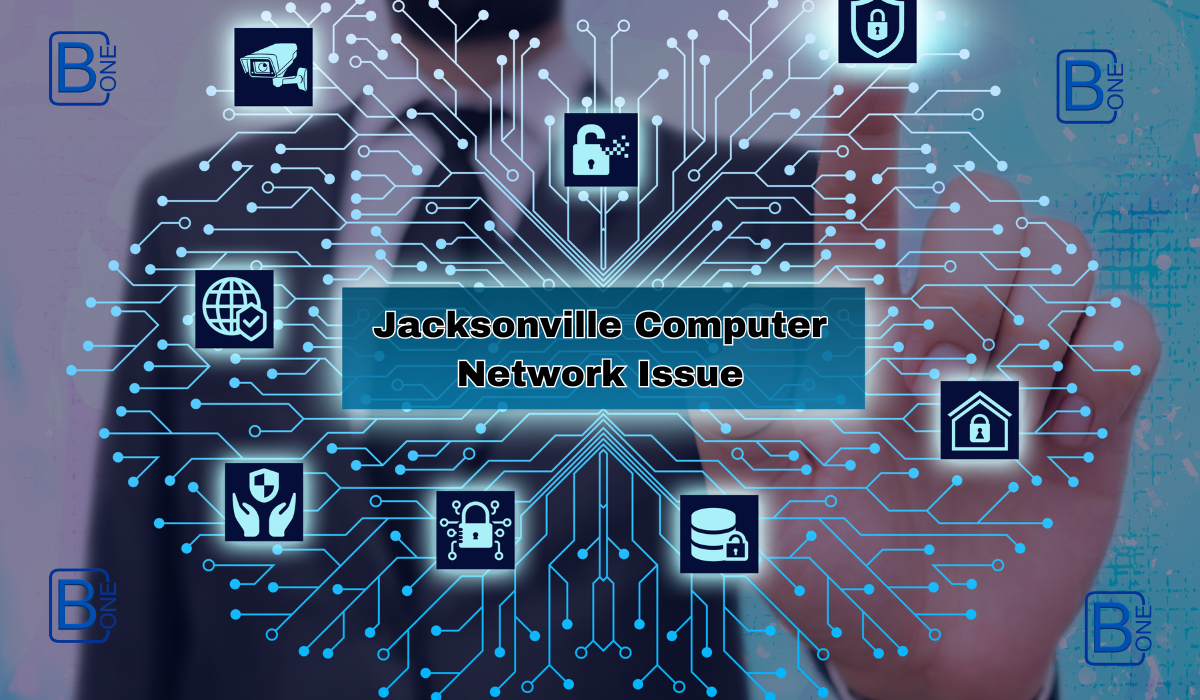Jacksonville, Florida is a rapidly growing metropolitan area that has embraced digital transformation in both public and private sectors. As businesses, educational institutions, and government entities increasingly rely on digital infrastructure, the demand for stable, secure, and high-performance computer networks has surged. Unfortunately, this digital dependency has exposed a critical vulnerability — the emergence and persistence of the Jacksonville computer network issue. This article offers a detailed, human-written examination of the problem, its causes, consequences, key stakeholders, and possible solutions.
Understanding the Jacksonville Computer Network Issue
The phrase Jacksonville computer network issue refers to a set of recurring problems affecting digital connectivity and cybersecurity across the Jacksonville area. These issues range from slow internet speeds and intermittent service outages to large-scale data breaches and poorly maintained network hardware.
While the problem may seem like a typical tech inconvenience on the surface, deeper investigation reveals a multifaceted challenge involving aging infrastructure, inconsistent IT standards, fragmented administrative oversight, and increasing exposure to cyberattacks. The implications stretch far beyond business disruptions—they touch on economic development, public safety, healthcare delivery, and educational access.
Historical Context and Growth of Network Dependency
To appreciate the magnitude of the Jacksonville computer network issue, it’s essential to understand Jacksonville’s trajectory over the past two decades. As one of Florida’s fastest-growing cities, Jacksonville has seen substantial investment in technology and infrastructure. Businesses have moved toward cloud services, remote work, and e-commerce. Public institutions including hospitals, schools, and government offices have increasingly digitized their operations.
With this growth came rising expectations for reliable network services. However, network infrastructure upgrades often lag behind growth, leading to congestion, outdated hardware, and vulnerabilities. In several cases, networks designed for early-2000s traffic levels are still in place today, ill-equipped to handle modern demands.
Contributing Factors to the Jacksonville Computer Network Issue

- Aging Infrastructure Many parts of Jacksonville still rely on decades-old cable lines and copper wiring, particularly in older commercial zones and underserved neighborhoods. These outdated components are prone to signal degradation, interference, and physical wear, leading to frequent disruptions.
- Fragmented IT Governance Jacksonville’s public and private sectors often operate in silos with little coordination. School districts may use one set of IT standards, while hospitals or police departments operate on completely different systems. This disjointed approach contributes to inefficiencies and makes it difficult to apply centralized solutions.
- Cybersecurity Vulnerabilities As networks expand, so do attack surfaces. Jacksonville has suffered from an increase in ransomware attacks, phishing campaigns, and data breaches targeting both businesses and public institutions. In 2021, a Jacksonville-based medical provider experienced a significant cyberattack that crippled operations for days, showcasing the potential severity of these threats.
- Underfunded Public Tech Initiatives Budget constraints at the municipal level often leave IT departments stretched thin. Without proper investment in IT staff, security protocols, and system upgrades, public networks remain exposed. While private companies may have the resources to protect their infrastructure, public sector networks in Jacksonville frequently fall short.
- Natural Disasters and Environmental Factors Jacksonville is no stranger to hurricanes and tropical storms. These events can disrupt both physical infrastructure and cloud-based systems. The 2022 hurricane season alone caused significant damage to server facilities and regional data centers, exacerbating the existing Jacksonville computer network issue.
Key Sectors Affected
Education
The Duval County Public Schools system has faced considerable setbacks due to unreliable networks. During the COVID-19 pandemic, the district’s remote learning initiative revealed major connectivity gaps. Students in lower-income neighborhoods often lacked consistent access to the internet, and network outages disrupted virtual classrooms.
Even in 2025, as hybrid learning continues, these issues persist. School servers struggle under high bandwidth demands, outdated routers throttle performance, and security concerns limit the adoption of new educational technologies.
Healthcare
Jacksonville’s healthcare system, including renowned institutions like UF Health Jacksonville and Baptist Health, depends on real-time data transmission for patient records, diagnostics, and telemedicine. Network lags or outages can delay treatment, disrupt communications between departments, and even compromise patient safety.
One illustrative case involved a late-night network blackout at a Jacksonville hospital that delayed access to critical imaging files for over two hours. Although backup systems were eventually restored, the incident prompted a full-scale review of IT protocols across the region.
Small and Medium Businesses (SMBs)
For Jacksonville’s SMB sector, which includes thousands of family-owned stores, service providers, and startups, network issues can mean lost revenue and reduced customer trust. Cloud-based point-of-sale systems, inventory tracking, and customer relationship management tools all rely on stable networks.
When outages strike, businesses face canceled transactions, lost data, and frustrated clients. Despite the stakes, many small business owners lack the resources to invest in redundant systems or dedicated IT staff, leaving them vulnerable to the Jacksonville computer network issue.
Public Services and Emergency Response
Public safety agencies, including police, fire, and emergency medical services, depend on coordinated digital communication systems. The Jacksonville Sheriff’s Office and Jacksonville Fire and Rescue Department have both reported instances where dispatch systems lagged due to connectivity problems. These delays can have life-threatening consequences, particularly during high-volume emergency situations like storms or public events.
The Cybersecurity Dimension
Jacksonville’s expanding digital footprint has made it a target for increasingly sophisticated cybercriminals. Local organizations face a variety of threats:
- Phishing Attacks: Employees at several Jacksonville businesses and schools have been victims of deceptive emails, leading to compromised accounts and stolen data.
- Ransomware: Hackers have successfully encrypted data from multiple local entities, demanding payment to release files.
- DDoS Attacks: Distributed Denial of Service attacks have temporarily shut down websites and online services, affecting both commerce and communication.
Cybersecurity professionals in Jacksonville warn that without widespread education, modern firewalls, and active threat monitoring, the Jacksonville computer network issue will only worsen.
Public and Private Efforts Toward Resolution

- Municipal Technology Initiatives The City of Jacksonville has initiated several programs aimed at addressing network problems. These include expanding fiber optic access to underserved areas, investing in 5G technology, and hiring more cybersecurity personnel. However, implementation has been uneven, and funding remains a challenge.
- Public-Private Partnerships Some encouraging developments include partnerships between the city and private ISPs to improve network reliability. Initiatives to lay new fiber-optic cables and establish emergency network redundancies are underway, but progress is slow and limited to high-demand zones.
- Educational Programs Universities and colleges in the area, such as the University of North Florida, are offering degrees and certifications in IT and cybersecurity. These programs aim to supply the region with a more robust pipeline of qualified professionals to address the Jacksonville computer network issue.
- Community Technology Grants Jacksonville has received state and federal grants aimed at improving digital literacy and access. These funds support community centers with high-speed internet and offer free or low-cost laptops and routers to students and low-income residents.
Obstacles to Overcome
Despite these initiatives, multiple barriers stand in the way of resolving the Jacksonville computer network issue:
- Bureaucratic Inefficiency: Delays in approving budgets and coordinating across departments have slowed progress.
- Lack of Public Awareness: Many Jacksonville residents are unaware of the depth of the issue, leading to insufficient political and civic pressure for reform.
- Economic Disparity: Low-income communities continue to be disproportionately affected, exacerbating the digital divide.
- Technological Lag: Some government and small business systems still rely on obsolete technology that cannot support modern security or performance standards.
Looking Forward: Potential Solutions
To resolve the Jacksonville computer network issue, a multi-pronged, collaborative approach is essential.
- Centralized IT Governance: Creating a citywide IT oversight board could help align standards and optimize resources.
- Modern Infrastructure Investments: Replacing aging infrastructure with fiber-optic lines and upgrading municipal data centers will boost performance and reliability.
- Cybersecurity Training and Audits: Mandatory training for public employees and regular third-party security audits can reduce cyber risk.
- Community Involvement: Empowering neighborhoods with knowledge and tools to advocate for better digital infrastructure can build grassroots support for systemic change.
- Federal Support: Jacksonville could benefit from increased federal investment in rural broadband, urban digital equity, and critical infrastructure protection.
Conclusion
The Jacksonville computer network issue is more than a nuisance—it is a challenge that touches every aspect of the city’s economic, educational, and public life. From healthcare to public safety, from small businesses to schools, reliable digital connectivity is no longer optional; it’s a necessity.
As Jacksonville continues to grow and innovate, tackling its network challenges must become a top priority. While the obstacles are significant, the combination of public awareness, strategic investment, and cross-sector collaboration offers a path forward. By addressing the root causes and committing to long-term solutions, Jacksonville can transform its digital vulnerabilities into strengths, ensuring a connected and resilient future for all.
visit website for more blogs: bartowfirst









Leave a Reply